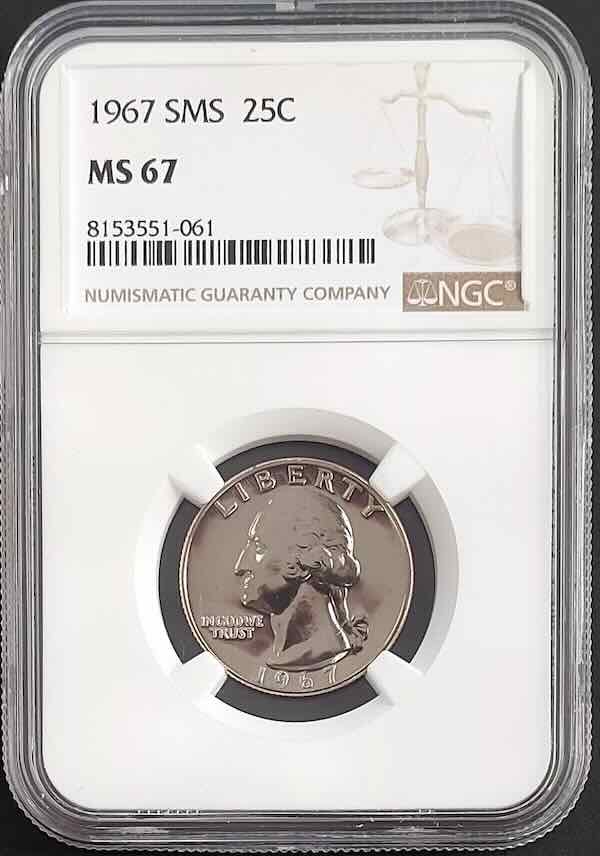A-Mark Precious Metals (NASDAQ: AMRK), one of the largest integrated precious metals firms in the United States, recently reported its fiscal Q3 2025 earnings. The quarter was challenging, marked by market volatility, rising financing costs, and integration complexities from recent acquisitions. However, beneath the $8.5 million quarterly net loss lies a more nuanced narrative highlighting retail strength, wholesale challenges, and a shifting bullion landscape.
Key Highlights
- Retail segment growth surged significantly, with customer numbers increasing 1,489% year-over-year, largely driven by acquisitions.
- Average retail order values for dealers like JM Bullion, BGASC, Provident Metals and Pinehurst Coins rose 45%, reaching $3,084 per transaction.
- Wholesale operations faced headwinds, with silver sales volumes down 39% year-over-year and gold volumes slightly reduced.
- Recent acquisitions (Pinehurst, Spectrum Group International, and AMS Holdings) are set to boost long-term profitability through expansion into higher-margin numismatics and collectibles.
- Adjusted net income and EBITDA were positive, despite the reported net loss, indicating underlying business strength.
- Macro trends, including state legislative moves recognizing gold and silver as legal tender, provide a supportive backdrop for retail precious metals demand.
Retail Resilience and Wholesale Weakness
A-Mark’s Direct-to-Consumer (DTC) division, which encompasses brands like JM Bullion, Pinehurst, and Goldline, exhibited robust performance this quarter. Customer growth jumped dramatically by 1,489% year-over-year, primarily driven by acquisitions, notably Pinehurst, which accounted for 84% of the new customer base. Additionally, average order values increased significantly by 45%, rising to $3,084 per order. Gross profit from retail sales also improved, now comprising 61% of total gross profits compared to 52% in the previous year.

However, wholesale operations encountered difficulties. Silver ounces sold declined sharply by 39%, and gold volumes experienced slight reductions. A-Mark’s Wholesale Sales & Ancillary Services division saw profitability impacted by compressed trading spreads and elevated financing costs, largely influenced by a backwardation scenario in precious metals markets. Broader economic issues, including tariffs, rising interest rates, and financial pressures, contributed to these challenging wholesale conditions.
A-Mark Acquisitions: Pinehurst, SGI, & AMS
A-Mark continued its strategic expansion through acquisitions, notably Pinehurst, Spectrum Group International (SGI), and AMS Holdings (GOVMINT.com), broadening its reach into luxury numismatics and collectible coin markets. These acquisitions, despite incurring significant integration costs—$4.6 million in acquisition-related expenses and a $7 million remeasurement loss related to Pinehurst—are expected to offer substantial long-term synergies through streamlined warehousing, fulfillment, and marketing efforts.
Outlook: Recovery in Motion?
Despite reporting a substantial net loss, adjusted financial indicators suggest underlying resilience. Adjusted net income reached $5.7 million, with EBITDA at $1.3 million, signaling improving operational momentum. Given current trends in gold and silver prices and persistent inflation concerns, A-Mark anticipates continued robust demand in the retail segment. The company’s recently expanded credit facility, now totaling $467 million, also provides flexibility to pursue advantageous inventory management and strategic leverage opportunities.
Nevertheless, significant risks remain, including ongoing interest rate volatility, geopolitical instability, and fluctuating precious metals prices, all of which complicate future guidance. Wholesale margins, particularly vulnerable under these conditions, remain an area of concern. Additionally, while acquisitions bring scale, they also present integration risks.
State Legal Tender Bills, Sales Tax and Bullion Demand
Several U.S. states have recently updated their laws to recognize gold and silver as legal tender and eliminate or reduce taxes on precious metals, reflecting a growing movement toward “sound money” policies. These changes aim to treat gold and silver as currency rather than commodities, lower transaction costs, and protect against inflation.
Recent Changes to Gold and Silver Legal Tender Laws
The movement of states increasingly recognizing U.S.-minted gold and silver coins as legal tender is rooted in Article I, Section 10 of the U.S. Constitution, which states, “No State shall…make any Thing but gold and silver Coin a Tender in Payment of Debts.”
- Florida (2025): The Florida Senate passed HB 999, the Sound Money Bill, in April 2025, with the House following suit. The bill is awaiting Governor Ron DeSantis’ signature. If signed, it will recognize gold and silver as legal tender, allowing their use as payment for debts and transactions, not merely as symbolic or speculative assets. This legislation aims to enhance monetary sovereignty by treating precious metals as money.
- Oklahoma (2024): Senate Bills SB1507 and SB1508, filed for the 2024 session, aim to eliminate state capital gains taxes on gold and silver sales and reinforce their status as legal tender. These bills also seek to protect precious metals from state seizure, furthering their use as currency.
- Missouri (2024): House Bills HB1867 and HB1955, along with Senate Bill SB735, were introduced in December 2023 for the 2024 session. These bills propose eliminating state capital gains taxes on gold and silver and treating them as legal tender. The legislation allows gold and silver in physical or electronic form to be accepted for public and private debts at the parties’ discretion, challenging the Federal Reserve’s fiat currency monopoly.
- Arkansas (2023): The Arkansas Legal Tender Act, effective August 1, 2023, recognized gold and silver as legal tender and eliminated sales, use, and capital gains taxes on their purchase, sale, or exchange. This applies to coins, bullion, and other items valued primarily by metal content.
- Utah (Ongoing): Utah, the first state to recognize gold and silver as legal tender in 2011, continues to build on its policies. Recent laws task the State Treasurer with analyzing the role of precious metals in stabilizing the state’s economy. Utah also supports Goldback notes, a currency overlaid with 24-karat gold.
Sales Tax Exemptions on Precious Metals
As of 2025, 45 states have eliminated some or all sales taxes on gold and silver, with recent additions reflecting a trend to reduce barriers to precious metal ownership. Sales taxes on precious metals are seen as illogical since they are held for resale, not consumption, and are not applied to other investments like stocks or bonds.
- Kentucky (2024): Kentucky became the 45th state to end sales taxes on gold, silver, platinum, and palladium, effective August 1, 2024, after the legislature overrode Governor Andy Beshear’s attempted veto of the exemption. The law covers bullion and coins sold based on their value as collectibles or intrinsic metal content. Studies, such as one from Michigan, show that sales taxes on precious metals drive business to neighboring states, costing more in lost economic activity than they generate in revenue.
- New Jersey (2024): Senate Bill 721 was signed into law in September 2024, removing sales taxes on purchases of gold, silver, and other precious metals. This victory for sound money advocates makes New Jersey the 44th state to enact such a policy.
- Mississippi (2023): Effective July 1, 2023, Mississippi eliminated sales taxes on gold, silver, platinum, and palladium bullion, coins, and currency, becoming the 42nd state to offer full or partial exemptions. The law defines bullion as bars, ingots, or coins used as a medium of exchange or commodity based on intrinsic value.
- Wisconsin (2024): Assembly Bill 29 and Senate Bill 33, passed in 2024, eliminated sales taxes on gold, silver, platinum, palladium, and copper bullion with at least 35% precious metal content. This followed debates over fiscal impacts, with proponents arguing that taxing precious metals harms small investors and local businesses.
Other States with Recent Activity:
- Georgia and Kansas (2024): Both states, which previously eliminated sales taxes on bullion, introduced bills (Georgia’s HB 895, Kansas’ HB 2405, and SB 303) to lift state capital gains taxes on precious metals, further treating them as money. These bills also reaffirm gold and silver as legal tender.
- Alaska (2023): House Bill 3, introduced in January 2023, proposes a partial sales tax exemption on gold and silver bullion and coins for transactions exceeding $1,000. The first $1,000 remains subject to Vermont’s 6% sales tax, and the bill’s status is uncertain.
- Tennessee (2022): Senate Bill SB0350, passed in 2022, exempted gold and silver coins from sales tax, building on earlier efforts to recognize them as legal tender.
An important macroeconomic trend emerging in the U.S. is legislation recognizing gold and silver as legal tender. Several states, including Louisiana, Utah, and Texas, have advanced or enacted such laws, which provide enhanced legitimacy and potential tax advantages for precious metals investors. These legislative developments bolster grassroots demand for bullion, benefiting firms like A-Mark, whose brands appeal strongly to retail investors and collectors.
Long-Term Bullish, Short-Term Challenges
Despite immediate financial setbacks, A-Mark continues to strategically expand its market presence and enhance its infrastructure to dominate future precious metals trading. While wholesale segments may remain turbulent, the company’s diversified approach—combining retail growth, targeted acquisitions, and integrated digital services—positions it uniquely for long-term success. For investors focused on silver and gold, A-Mark’s unfolding strategy warrants close attention beyond short-term financial performance.




